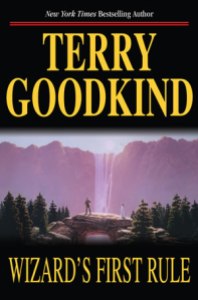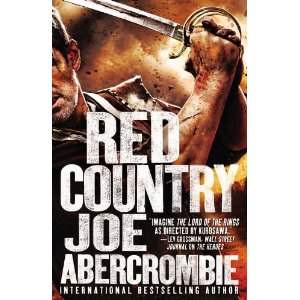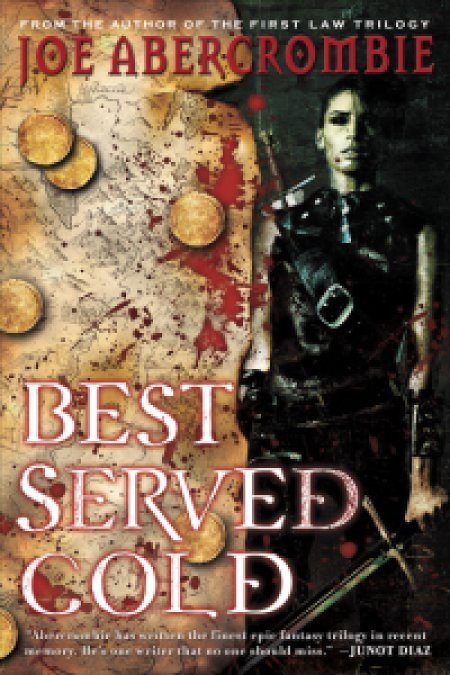
Image courtesy www.rantingdragon.com.
Right now is a great time to be be a fantasy fan.
More and more, the genre is moving away from Tolkien cloning and beyond to brave new horizons. The Name of the Wind by Patrick Rothfuss is a great example of this movement.
The Name of the Wind is the story of Kvothe, a man so legendary that his reputation has become larger than his own life. Over three days, Kvothe recounts the stories of his travels to a man named Chronicler (each book in the trilogy is one day of the tale).
The narrative style alone sets this one aside from a lot of other books in the genre. I can’t remember ever reading a fantasy book quite like it. It makes you forget that you’re reading a story and makes you think that you’re listening to a story; one half is first-person narration from Kvothe’s point of view, and the other is third person omniscient narration in Kvothe’s inn.
The world is vaguely reminiscent of Harry Potter, with an academy that teaches magical arts, among other disciplines. That isn’t to say that The Name of the Wind is targeted only to a young adult audience, however. It isn’t quite as grim as some modern fantasy, say A Song of Ice and Fire, but it’s certainly not for kids. There are sexual references, there is occasional cursing, and there’s a melancholy, regretful undertone to the whole thing. This one lands somewhere between a young adult audience and a strictly adult audience, I think.
Kvothe is a well-drawn and likable protagonist, full of wit and resourcefulness. It’s interesting to see the contrast between his young self and older self; the latter is sombre and defeated, while the former is lively and daring. Furthermore, the character is brought to life not only by his accomplishments, but also by his shortcomings. He’s undeniably cool, but he’s also undeniably arrogant. Rothfuss doesn’t make the same mistake that many fantasy authors do when writing their central hero; Kvothe is flawed, and therefore human.
Unfortunately, Kvothe’s realism makes some of the supporting cast appear dull in comparison––namely, Denna. When I read her, I felt like I’d read her a hundred times before. She’s so beautiful that everyone wants her, and as a result she’s become bored by everyone’s attention. It’s already been done. I really hope she develops more as the series progresses, because as of now she basically has one trait: she’s really freakin’ hot.
Speaking of the rest of the series, some really interesting questions have been posed by this first volume. What are these demons infesting the countryside, where are they coming from, and what does Kvothe have to do with them? Who are the Chandrian? What will Elodin mentor Kvothe? Will Kvothe and Denna ever meet again in the present timeline?
The sequel is already out, titled The Wise Man’s Fear, and the final entry in the trilogy is currently in the works. They’re next on my list.
…
The Name of the Wind is an excellent setup to a very promising trilogy. The narrative style, main character, and world work nicely to create one of the best modern fantasy books out there.
Rating: 9/10



 I just saw The Hobbit a couple of nights ago, and my first thought upon leaving the theatre was…what was wrong with that?
I just saw The Hobbit a couple of nights ago, and my first thought upon leaving the theatre was…what was wrong with that? A fantasy-western hybrid. Sounds fun, right? That’s what Joe Abercrombie’s Red Country. Set in the disputed, gold-ridled landscape of the Far Country, Red Country tells the story of Shy South and her step-father Lamb. When their farm is burned down and Shy’s brother and sister are taken, the unlikely pair go on a quest to get them back. But Lamb isn’t who he seems, and the quest becomes more than they bargained for.
A fantasy-western hybrid. Sounds fun, right? That’s what Joe Abercrombie’s Red Country. Set in the disputed, gold-ridled landscape of the Far Country, Red Country tells the story of Shy South and her step-father Lamb. When their farm is burned down and Shy’s brother and sister are taken, the unlikely pair go on a quest to get them back. But Lamb isn’t who he seems, and the quest becomes more than they bargained for. If you haven’t noticed from my book choices, I’m a big fan of fantasy literature. Ever since reading The Hobbit, I’ve been hooked. So after browsing the fantasy/sci-fi section of the bookstore the other day, I decided on David Eddings’ Pawn of Prophecy. I’d heard good things about it before, so my expectations were pretty high.
If you haven’t noticed from my book choices, I’m a big fan of fantasy literature. Ever since reading The Hobbit, I’ve been hooked. So after browsing the fantasy/sci-fi section of the bookstore the other day, I decided on David Eddings’ Pawn of Prophecy. I’d heard good things about it before, so my expectations were pretty high. Cynical characters, fast pacing, and a hell of a lot of blood. I think that sums up Joe Abercrombie’s fantasy novel The Heroes pretty well.
Cynical characters, fast pacing, and a hell of a lot of blood. I think that sums up Joe Abercrombie’s fantasy novel The Heroes pretty well. ‘Why so soon?’ you may be asking. I might ask myself the same question. Truth is, I’ve been reading my brains out because my summer job hasn’t started yet, and I haven’t had much else to do besides read and write this dandy blog here. Oh well…you can never read too many books!
‘Why so soon?’ you may be asking. I might ask myself the same question. Truth is, I’ve been reading my brains out because my summer job hasn’t started yet, and I haven’t had much else to do besides read and write this dandy blog here. Oh well…you can never read too many books! Just finished Joe Abercrombie’s Best Served Cold, and it’s easily my favorite entry from an excellent fantasy writer.
Just finished Joe Abercrombie’s Best Served Cold, and it’s easily my favorite entry from an excellent fantasy writer.
